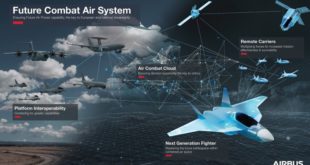Introduction:
In today’s rapidly advancing world, the integration of artificial intelligence (AI) into trajectory prediction has become increasingly vital. From guiding autonomous vehicles to enhancing military defense systems, AI-powered trajectory prediction algorithms are reshaping various industries and paving the way for safer and more efficient operations.
The Significance of Trajectory Prediction:
Trajectory prediction involves forecasting the future path of an object based on its current position, velocity, and other relevant factors. Accuracy in trajectory prediction is critical for optimal performance and collision avoidance across various domains, including transportation, aerospace, and defense.
AI in Trajectory Prediction:
AI algorithms, particularly those based on machine learning (ML) and deep learning, offer unprecedented precision and reliability in trajectory prediction tasks. By analyzing vast amounts of historical data and identifying intricate patterns, AI models can learn to predict trajectories with remarkable accuracy. AI-based trajectory prediction algorithms excel in handling complex and dynamic environments, adapting to uncertainties such as weather changes and obstacles in real-time.
Applications in Autonomous Vehicles:
In autonomous vehicles, AI-powered trajectory prediction is essential for safe navigation amidst dynamic traffic scenarios. By analyzing data from sensors like cameras, LiDAR, and radar, AI algorithms anticipate the movements of surrounding objects, enabling informed decision-making for collision avoidance and smooth navigation.
Military Defense and Security:
AI-based trajectory prediction plays a crucial role in military defense, guiding missile systems and tracking the paths of hostile drones. Enhanced situational awareness and response capabilities are achieved through accurate prediction of incoming threats, enabling swift interception and neutralization.
Beyond Automotive and Defense:
AI-powered trajectory prediction extends to diverse fields such as aerospace, robotics, and sports analytics. Applications include forecasting trajectories for aircraft, guiding robotic systems, and analyzing player movements in sports for strategic insights.
- Sports Analytics: Analyzing athlete movements helps coaches devise personalized training strategies and predict opponent behavior, leading to a competitive edge. Imagine predicting the perfect serve or the optimal running route based on real-time data.
- Weather Forecasting: By analyzing complex weather patterns, AI can predict storms, floods, and other natural disasters with greater accuracy, allowing for better preparation and saving lives.
- Finance and Economics: Predicting market trends and individual stock behavior can inform investment decisions and mitigate financial risks. Imagine AI accurately forecasting economic downturns or identifying undervalued assets.
AI in trajectory prediction Industry
AI in trajectory prediction represents a pivotal area of innovation within artificial intelligence, leveraging advanced techniques such as neural networks to forecast the future path of objects or vehicles in various environments. This process involves the analysis of sensor data and the application of neural network models to generate predictions based on historical information. The integration of AI in trajectory prediction has far-reaching implications across industries, particularly in aerospace and defense, where accurate trajectory forecasting is essential for optimal performance and safety.
According to GlobalData’s analysis, over 30 companies, ranging from technology vendors to established aerospace giants and emerging startups, are actively involved in the development and application of AI in trajectory prediction. These companies are driving innovation in this space, aiming to enhance prediction accuracy and adaptability across diverse applications and geographic regions.
Key players in AI for trajectory prediction include industry leaders like Boeing, Thales, and Baidu, who have filed numerous patents related to this technology. Boeing, for instance, has focused on developing methods and systems utilizing machine learning algorithms and deep neural networks to forecast aircraft flight paths and provide adaptive in-flight management in response to dynamic conditions. Other notable patent filers, such as Aptiv and BAE Systems, are also contributing to advancements in this field.
In terms of application diversity, companies like Boeing, Teledyne FLIR, and the Japan Aerospace Exploration Agency (JAXA) are leading the way with innovative approaches to trajectory prediction across various domains. Additionally, patent filers like Boeing, Raytheon Technologies, and JAXA have demonstrated a broad geographic reach, reflecting the global impact and relevance of AI-powered trajectory prediction technologies.
As AI continues to evolve and mature, the trajectory prediction landscape is poised for further advancements. With ongoing research and development efforts, coupled with collaborative initiatives across industries, the future of AI in trajectory prediction holds immense potential for driving innovation and addressing complex challenges in aerospace, defense, and beyond. For deeper insights into the disruptive role of AI in defense and aerospace, access GlobalData’s thematic research report on Artificial Intelligence (AI) in Defense.
The Challenges and the Future:
Despite its potential, trajectory prediction faces challenges:
Data Quality and Quantity: Accurate predictions require vast amounts of high-quality data, which can be expensive and time-consuming to collect. Ensuring data accuracy and sufficiency remains a key challenge in refining trajectory prediction algorithms for real-world applications.
Uncertainty and Complexity: Real-world scenarios are often unpredictable, with external factors such as weather conditions, road conditions, and human behavior introducing complexity that AI models need to learn and adapt to. Developing AI algorithms capable of handling such uncertainties and dynamic environments is essential for reliable trajectory prediction.
Ethical Considerations: The potential misuse of trajectory prediction for surveillance, profiling, or manipulation raises ethical concerns that need careful consideration. Balancing the benefits of trajectory prediction with privacy and security concerns is crucial for responsible development and deployment of this technology.
Looking ahead, advancements in AI, sensor technology, and data analysis will continue to refine trajectory prediction capabilities. With responsible development and ethical considerations, this technology holds immense potential to improve safety, optimize performance, and even save lives across various industries. As researchers and developers address these challenges, trajectory prediction will evolve into a more robust and reliable tool, driving innovation and shaping the future of autonomous systems and intelligent decision-making.
Conclusion:
As AI and ML technologies continue to advance, the future of trajectory prediction holds immense promise. With increased sophistication and data-driven approaches, trajectory prediction systems will become even more precise, adaptive, and reliable, driving progress across industries and shaping a safer and more efficient future.
 International Defense Security & Technology Your trusted Source for News, Research and Analysis
International Defense Security & Technology Your trusted Source for News, Research and Analysis
